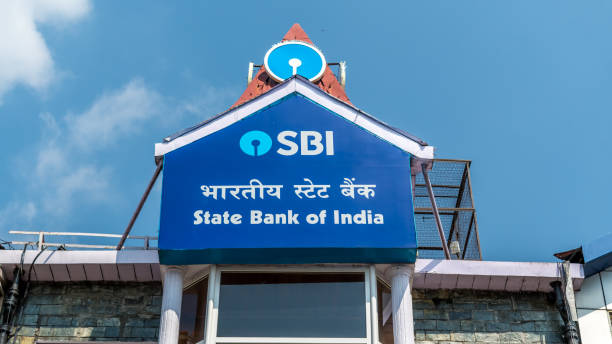The SBI stock market rate is the price at which State Bank of India shares are traded. It holds importance for investors, analysts, and the Indian economy, fluctuating based on bank performance, market conditions, and economic policies.
What Influences the SBI Stock Market Rate?
The SBI stock market rate is influenced by numerous factors that can drive its price higher or lower. These factors can be classified into internal and external elements:
Bank’s Performance: The financial performance of SBI is one of the key drivers of its stock market rate. Investors analyze earnings reports to assess the bank’s performance in revenue, profit margins, and loan book growth. Strong performance boosts stock price; weaker earnings or NPAs can lower it.
Interest Rates: As a bank, SBI’s profitability is directly related to interest rates. The benchmark interest rate, which influences lending and borrowing costs, is established by the Reserve Bank of India (RBI). Changes in these rates influence SBI’s loan growth and net interest margin, thus impacting the SBI stock market rate.
Macroeconomic Factors: Broader economic conditions like GDP growth, inflation, and employment levels also affect SBI’s business. A healthy economy generally leads to more loans and higher profitability for the bank, thus positively influencing the stock market rate. Conversely, a sluggish economy or economic downturns can hurt business and reduce the value of SBI’s stock.
Government Policies: Since SBI is a government-owned entity, decisions by the Indian government can have a major impact on its stock price. Policies such as financial sector reforms, changes in tax laws, or government bailouts during tough times can either raise or lower the SBI stock market rate.
Global Market Trends: The global financial landscape also plays a role. Events like global recessions, inflationary pressures, or crises in the banking sector (e.g., banking collapses in other countries) can affect investor confidence and, in turn, influence SBI’s stock price.
Investor Sentiment and Market Liquidity: Investor confidence is a significant factor in the SBI stock market price. If investors are optimistic about the bank’s future prospects, there is usually an increase in demand for its shares, pushing the price up. On the other hand, bearish sentiment or concerns regarding the Indian banking sector can lead to sell-offs and a decline in the stock price.
Tracking the SBI Stock Market Rate
To track the SBI stock market rate, investors typically refer to various financial tools and platforms. These include:
Stock Exchanges: SBI’s shares are primarily listed on the Bombay Stock Exchange (BSE) and the National Stock Exchange (NSE). Both exchanges provide real-time data on the stock’s price movements.
Market Indices: SBI is part of the BSE Sensex and Nifty 50 indices. Monitoring the SBI stock market price via these indices can help investors gauge the bank’s performance compared to the overall market.
Financial News: News outlets, financial websites, and brokerage platforms provide regular updates on SBI stock market rate along with analysis on market conditions, economic factors, and news affecting the bank.
How to Analyze the SBI Stock Market Rate
When considering investing in SBI or tracking its stock price, investors use several analytical tools to better understand its movement:
Price-to-Earnings (P/E) Ratio: Investors use the P/E ratio to determine if a stock is under or overvalued. A lower P/E ratio signifies a potential bargain, while a higher P/E ratio might indicate overvaluation, but can also represent high growth prospects.
Dividend Yield: Dividend Yield: SBI has a track record of giving its stockholders dividend payments. The SBI stock market rate often reflects investor anticipation of dividends. A higher dividend yield, combined with a steady or rising stock price, can make SBI an attractive option for income-focused investors.
Return on Equity (ROE): A key measure of profitability, the ROE ratio indicates how effectively SBI is using its equity to generate profit. A higher ROE often correlates with a higher SBI stock market price.
Technical Analysis: Investors and traders use chart patterns, moving averages, and technical indicators to predict future price movements of SBI’s stock based on historical price trends and volume, forecasting short-term price direction.
Fundamental Analysis: This involves examining the bank’s financial statements, management quality, market position, and competitive landscape. Strong fundamentals typically lead to a higher SBI stock market price, as they indicate stability and growth potential.
The Role of SBI in the Indian Economy
The SBI stock market rate also reflects the broader health of the Indian economy. SBI’s performance is a key indicator for the banking sector and financial stability. Changes in its stock price can reflect confidence or concerns related to the economy, policies, and banking health.
SBI’s vital role in financial inclusion is evident through its diverse banking services reaching rural populations. The bank has made important contributions to India’s economic growth and stock market success through its digitisation, lending expansion, and financial shift adaptation programs.
Conclusion
The SBI stock market rate serves as an important indicator for investors, traders, and analysts looking to gauge the financial health and performance of the State Bank of India. A variety of factors—ranging from the bank’s financial performance to macroeconomic conditions—affect the stock price. To engage with SBI’s stock effectively, monitor financial reports and market trends. Understanding these influences can guide investment decisions for both long-term and short-term investors.

